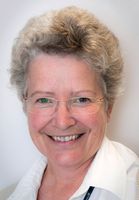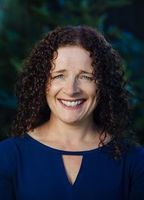Wellington > Private Hospitals & Specialists >
Bowen Icon Cancer Centre
Private Service, Oncology, Radiation Oncology, Haematology
Today
8:00 AM to 4:30 PM.
Description
Bowen Icon Cancer Centre delivers world-class, exceptional cancer care in a friendly and supportive environment for patients and their whānau. Led by a team of highly experienced cancer specialists, the centre offers a wide range of cutting-edge treatment options with no wait list.
Our cancer care services
- Private six-chair day oncology hospital providing chemotherapy, targeted therapy, immunotherapy and treatment for blood disorders
- State-of-the-art radiation therapy technology and techniques including stereotactic radiation therapy, HyperArc for treatment of multiple brain metastases and SpaceOAR Hydrogel for prostate cancer treatment
- Scalp cooling technology to help minimise chemotherapy-induced hair loss
- Lymphoedema screening and early intervention service for local breast cancer patients
- Southern Cross Affiliated Partner Provider
- Free on-site patient parking
Consultants
-

Dr Catherine Barrow
Medical Oncologist
-

Dr Kate Clarke
Medical Oncologist
-

Dr Anup George
Clinical Haematologist
-

Dr Douglas Iupati
Radiation Oncologist
-

Dr Carol Johnson
Radiation Oncologist
-

Dr Han Kim
Radiation Oncologist
-

Dr Brendan Luey
Medical Oncologist
-

Dr Nichola Naidoo
Radiation Oncologist
-

Dr Anna Nicholson
Radiation Oncologist
-

Dr Anne O'Donnell
Medical Oncologist
-

Dr David Okonji
Medical Oncologist
Ages
Adult / Pakeke, Older adult / Kaumātua
How do I access this service?
Referral
Treatment at Icon does require a referral from your GP or specialist.
Referral Expectations
Contact us online here if you have a question about becoming a patient at Bowen Icon Cancer Centre.
Fees and Charges Categorisation
Fees apply
Fees and Charges Description
Read about fees associated with treatment here
Hours
8:00 AM to 4:30 PM.
| Mon – Fri | 8:00 AM – 4:30 PM |
|---|
Procedures / Treatments
Cancer is diagnosed with a number of tests but usually a biopsy is needed. This is where a sample of the lesion/growth is sent to the laboratory to be examined under the microscope. This can tell the doctors exactly what type of cancer is present and guides them to what sort of treatment might be best. Samples can be obtained with different techniques: Fine needle aspirate (FNA): a small needle is inserted into a lump and some cells are sucked out and sent to the laboratory. If the lump is on the surface of your body the doctor will do this in the consultation room with some local anaesthetic injected into the skin so the procedure won’t hurt. If the tumour is inside your body an FNA can still be done but it is done with guidance from a CT scanner or ultrasound so the doctor can see where the needle needs to go. This is done by a specialist radiologist (a doctor trained in the speciality of x-rays). Biopsy: a small piece of a lesion is cut out and sent to the laboratory. If it is on the outside of your body this procedure is done with local anaesthetic (makes the area numb so it doesn’t hurt). Sometimes it can be done by putting tiny telescopes into areas they can’t reach to take the biopsy. Sometimes an operation is required to be sure about the diagnosis. Endoscopy: a flexible tube with a viewing lens and a fibre optic light on the end is passed through natural body orifices (openings) to view the colon (colonoscopy), stomach (gastroscopy) or lungs (bronchoscopy). Laparoscopy: similar to endoscopy, but requires a small cut (incision) to be made in the body such as the abdominal (tummy) wall. The laparoscope is then pushed through the incision to look for possible areas of cancer, which can then be biopsied. When this type of procedure is done in the chest it is called a thoracoscopy or mediastinoscopy. Other tests are often needed to establish the diagnosis and extent of a cancer. These include blood and urine tests, CT or MRI scans, ultrasounds, nuclear medicine scans. Once the diagnosis is established you will meet with various specialists to talk about what treatment options are available and the benefits and risks of those treatments as well as what the diagnosis means. It is a good idea to have a support person with you for these consultations as a lot of information is often given and it can be hard to take it all in. It is a good idea to write down a list of questions you might want to ask.
Cancer is diagnosed with a number of tests but usually a biopsy is needed. This is where a sample of the lesion/growth is sent to the laboratory to be examined under the microscope. This can tell the doctors exactly what type of cancer is present and guides them to what sort of treatment might be best. Samples can be obtained with different techniques: Fine needle aspirate (FNA): a small needle is inserted into a lump and some cells are sucked out and sent to the laboratory. If the lump is on the surface of your body the doctor will do this in the consultation room with some local anaesthetic injected into the skin so the procedure won’t hurt. If the tumour is inside your body an FNA can still be done but it is done with guidance from a CT scanner or ultrasound so the doctor can see where the needle needs to go. This is done by a specialist radiologist (a doctor trained in the speciality of x-rays). Biopsy: a small piece of a lesion is cut out and sent to the laboratory. If it is on the outside of your body this procedure is done with local anaesthetic (makes the area numb so it doesn’t hurt). Sometimes it can be done by putting tiny telescopes into areas they can’t reach to take the biopsy. Sometimes an operation is required to be sure about the diagnosis. Endoscopy: a flexible tube with a viewing lens and a fibre optic light on the end is passed through natural body orifices (openings) to view the colon (colonoscopy), stomach (gastroscopy) or lungs (bronchoscopy). Laparoscopy: similar to endoscopy, but requires a small cut (incision) to be made in the body such as the abdominal (tummy) wall. The laparoscope is then pushed through the incision to look for possible areas of cancer, which can then be biopsied. When this type of procedure is done in the chest it is called a thoracoscopy or mediastinoscopy. Other tests are often needed to establish the diagnosis and extent of a cancer. These include blood and urine tests, CT or MRI scans, ultrasounds, nuclear medicine scans. Once the diagnosis is established you will meet with various specialists to talk about what treatment options are available and the benefits and risks of those treatments as well as what the diagnosis means. It is a good idea to have a support person with you for these consultations as a lot of information is often given and it can be hard to take it all in. It is a good idea to write down a list of questions you might want to ask.
Cancer is diagnosed with a number of tests but usually a biopsy is needed. This is where a sample of the lesion/growth is sent to the laboratory to be examined under the microscope. This can tell the doctors exactly what type of cancer is present and guides them to what sort of treatment might be best.
Samples can be obtained with different techniques:
- Fine needle aspirate (FNA): a small needle is inserted into a lump and some cells are sucked out and sent to the laboratory. If the lump is on the surface of your body the doctor will do this in the consultation room with some local anaesthetic injected into the skin so the procedure won’t hurt. If the tumour is inside your body an FNA can still be done but it is done with guidance from a CT scanner or ultrasound so the doctor can see where the needle needs to go. This is done by a specialist radiologist (a doctor trained in the speciality of x-rays).
- Biopsy: a small piece of a lesion is cut out and sent to the laboratory. If it is on the outside of your body this procedure is done with local anaesthetic (makes the area numb so it doesn’t hurt). Sometimes it can be done by putting tiny telescopes into areas they can’t reach to take the biopsy. Sometimes an operation is required to be sure about the diagnosis.
- Endoscopy: a flexible tube with a viewing lens and a fibre optic light on the end is passed through natural body orifices (openings) to view the colon (colonoscopy), stomach (gastroscopy) or lungs (bronchoscopy).
- Laparoscopy: similar to endoscopy, but requires a small cut (incision) to be made in the body such as the abdominal (tummy) wall. The laparoscope is then pushed through the incision to look for possible areas of cancer, which can then be biopsied. When this type of procedure is done in the chest it is called a thoracoscopy or mediastinoscopy.
Other tests are often needed to establish the diagnosis and extent of a cancer. These include blood and urine tests, CT or MRI scans, ultrasounds, nuclear medicine scans.
Once the diagnosis is established you will meet with various specialists to talk about what treatment options are available and the benefits and risks of those treatments as well as what the diagnosis means. It is a good idea to have a support person with you for these consultations as a lot of information is often given and it can be hard to take it all in. It is a good idea to write down a list of questions you might want to ask.
Chemotherapy is the use of medicines to kill or reduce the spread of cancer cells. Chemotherapy is given as cycles and may be given once a day, once a week or even once a month. This depends on the type of cancer and the best regimen (course) as determined by research. Chemotherapy, unlike radiation (which treats only the part of the body exposed to the radiation), treats the entire body. As a result, any cells that may have escaped from where the cancer originated are treated. A doctor who administers chemotherapy is known as a medical oncologist. Depending on what type of cancer you have and whether it has spread, your doctor may use chemotherapy to: Eliminate all cancer cells in your body, even when cancer is widespread Prolong your life by controlling cancer growth and spread or Relieve symptoms and improve your quality of life. Most chemotherapy drugs are given in one of the following ways: You might take a tablet or medicine orally (swallow) It may be given intravenously as an injection over a short period of time or as an infusion over a longer period of time. For these treatments you come into the Department usually for part of the day. Side effects Some people have no side effects at all from chemotherapy. Sometimes, however, chemotherapy will make you feel sick. As each type of chemotherapy has different side effects they will be discussed with you prior to starting any treatment so you know what to expect. Chemotherapy targets cells that are quickly dividing, whether it's a cancer cell or not. Therefore, some non-cancer cells that divide quickly are also damaged. The following is a list of some normal cells that divide quickly in the body and may be susceptible to the effects of chemotherapy: Cells in your hair (can cause hair loss) Cells of the skin and mouth (can cause sores in your mouth and dry skin) Cells in your stomach and intestines (can cause you to feel sick, vomit or have diarrhoea) Cells in your bone marrow. This is where your red and white blood cells are made. White blood cells fight infections, so temporarily you are very prone to these and they can become serious. Loss of red blood cells can make you anaemic and tired. There are many medicines you can take to reduce or lessen these unwanted effects of chemotherapy. In some cases, chemotherapy may be the only treatment you need. More often, it's used in conjunction with other treatments, such as surgery or radiation, to improve results. For example, you may receive: Neoadjuvant chemotherapy. The goal of neoadjuvant therapy is to reduce the size of a tumour with chemotherapy before surgery or radiation therapy. Adjuvant chemotherapy. Given after surgery or radiation, the goal of adjuvant chemotherapy is to eliminate any cancer cells that might linger in your body following earlier treatments.
Chemotherapy is the use of medicines to kill or reduce the spread of cancer cells. Chemotherapy is given as cycles and may be given once a day, once a week or even once a month. This depends on the type of cancer and the best regimen (course) as determined by research. Chemotherapy, unlike radiation (which treats only the part of the body exposed to the radiation), treats the entire body. As a result, any cells that may have escaped from where the cancer originated are treated. A doctor who administers chemotherapy is known as a medical oncologist. Depending on what type of cancer you have and whether it has spread, your doctor may use chemotherapy to: Eliminate all cancer cells in your body, even when cancer is widespread Prolong your life by controlling cancer growth and spread or Relieve symptoms and improve your quality of life. Most chemotherapy drugs are given in one of the following ways: You might take a tablet or medicine orally (swallow) It may be given intravenously as an injection over a short period of time or as an infusion over a longer period of time. For these treatments you come into the Department usually for part of the day. Side effects Some people have no side effects at all from chemotherapy. Sometimes, however, chemotherapy will make you feel sick. As each type of chemotherapy has different side effects they will be discussed with you prior to starting any treatment so you know what to expect. Chemotherapy targets cells that are quickly dividing, whether it's a cancer cell or not. Therefore, some non-cancer cells that divide quickly are also damaged. The following is a list of some normal cells that divide quickly in the body and may be susceptible to the effects of chemotherapy: Cells in your hair (can cause hair loss) Cells of the skin and mouth (can cause sores in your mouth and dry skin) Cells in your stomach and intestines (can cause you to feel sick, vomit or have diarrhoea) Cells in your bone marrow. This is where your red and white blood cells are made. White blood cells fight infections, so temporarily you are very prone to these and they can become serious. Loss of red blood cells can make you anaemic and tired. There are many medicines you can take to reduce or lessen these unwanted effects of chemotherapy. In some cases, chemotherapy may be the only treatment you need. More often, it's used in conjunction with other treatments, such as surgery or radiation, to improve results. For example, you may receive: Neoadjuvant chemotherapy. The goal of neoadjuvant therapy is to reduce the size of a tumour with chemotherapy before surgery or radiation therapy. Adjuvant chemotherapy. Given after surgery or radiation, the goal of adjuvant chemotherapy is to eliminate any cancer cells that might linger in your body following earlier treatments.
Chemotherapy is the use of medicines to kill or reduce the spread of cancer cells. Chemotherapy is given as cycles and may be given once a day, once a week or even once a month. This depends on the type of cancer and the best regimen (course) as determined by research. Chemotherapy, unlike radiation (which treats only the part of the body exposed to the radiation), treats the entire body. As a result, any cells that may have escaped from where the cancer originated are treated.
A doctor who administers chemotherapy is known as a medical oncologist.
Depending on what type of cancer you have and whether it has spread, your doctor may use chemotherapy to:
- Eliminate all cancer cells in your body, even when cancer is widespread
- Prolong your life by controlling cancer growth and spread or
- Relieve symptoms and improve your quality of life.
Most chemotherapy drugs are given in one of the following ways:
- You might take a tablet or medicine orally (swallow)
- It may be given intravenously as an injection over a short period of time or as an infusion over a longer period of time. For these treatments you come into the Department usually for part of the day.
Side effects
Some people have no side effects at all from chemotherapy. Sometimes, however, chemotherapy will make you feel sick. As each type of chemotherapy has different side effects they will be discussed with you prior to starting any treatment so you know what to expect. Chemotherapy targets cells that are quickly dividing, whether it's a cancer cell or not. Therefore, some non-cancer cells that divide quickly are also damaged. The following is a list of some normal cells that divide quickly in the body and may be susceptible to the effects of chemotherapy:
- Cells in your hair (can cause hair loss)
- Cells of the skin and mouth (can cause sores in your mouth and dry skin)
- Cells in your stomach and intestines (can cause you to feel sick, vomit or have diarrhoea)
- Cells in your bone marrow. This is where your red and white blood cells are made. White blood cells fight infections, so temporarily you are very prone to these and they can become serious. Loss of red blood cells can make you anaemic and tired.
There are many medicines you can take to reduce or lessen these unwanted effects of chemotherapy.
In some cases, chemotherapy may be the only treatment you need. More often, it's used in conjunction with other treatments, such as surgery or radiation, to improve results. For example, you may receive:
- Neoadjuvant chemotherapy. The goal of neoadjuvant therapy is to reduce the size of a tumour with chemotherapy before surgery or radiation therapy.
- Adjuvant chemotherapy. Given after surgery or radiation, the goal of adjuvant chemotherapy is to eliminate any cancer cells that might linger in your body following earlier treatments.
It is very common for people with cancer to want to try other non-medical treatments such as diet or alternative/complementary medicines offered by other practitioners. It is helpful for your oncology team to know what other therapies you might be taking as sometimes there can be interactions with their treatment.
It is very common for people with cancer to want to try other non-medical treatments such as diet or alternative/complementary medicines offered by other practitioners. It is helpful for your oncology team to know what other therapies you might be taking as sometimes there can be interactions with their treatment.
It is very common for people with cancer to want to try other non-medical treatments such as diet or alternative/complementary medicines offered by other practitioners. It is helpful for your oncology team to know what other therapies you might be taking as sometimes there can be interactions with their treatment.
Radiation therapy uses special equipment to deliver high doses of radiation (beam of x-rays) to cancerous tumours, to kill or damage them so they cannot grow or spread. Normal cells may be affected by radiation, but most appear to recover fully from the effects of the treatment. Radiation therapy affects only the tumour and the surrounding area. Some cancers are very sensitive to radiation but not all. Radiation therapy is usually given in small doses over a period of time; this is known as a course. A doctor who manages your radiation therapy is called a radiation oncologist. Some common side effects of radiation treatment include: · Fatigue or tiredness · During the first two weeks of treatment, a faint and short lasting redness may occur on your skin. Dryness and peeling of the skin may occur in 3 to 4 weeks. The skin over the treatment area may become darker · Mucositis (inflammation of the lining of the mouth) is a temporary side effect that may happen when radiation is given to the head and neck area · Radiation to the head and neck area can increase your chances of getting cavities. Before starting radiation therapy, notify your dentist and plan for a complete check-up · When radiation treatments include the chest area, the lungs can be affected and you may experience shortness of breath or cough · Radiation to the abdomen may result in swelling and inflammation to the oesophagus (tube from throat to stomach) or intestines, causing nausea, vomiting, or diarrhoea
Radiation therapy uses special equipment to deliver high doses of radiation (beam of x-rays) to cancerous tumours, to kill or damage them so they cannot grow or spread. Normal cells may be affected by radiation, but most appear to recover fully from the effects of the treatment. Radiation therapy affects only the tumour and the surrounding area. Some cancers are very sensitive to radiation but not all. Radiation therapy is usually given in small doses over a period of time; this is known as a course. A doctor who manages your radiation therapy is called a radiation oncologist. Some common side effects of radiation treatment include: · Fatigue or tiredness · During the first two weeks of treatment, a faint and short lasting redness may occur on your skin. Dryness and peeling of the skin may occur in 3 to 4 weeks. The skin over the treatment area may become darker · Mucositis (inflammation of the lining of the mouth) is a temporary side effect that may happen when radiation is given to the head and neck area · Radiation to the head and neck area can increase your chances of getting cavities. Before starting radiation therapy, notify your dentist and plan for a complete check-up · When radiation treatments include the chest area, the lungs can be affected and you may experience shortness of breath or cough · Radiation to the abdomen may result in swelling and inflammation to the oesophagus (tube from throat to stomach) or intestines, causing nausea, vomiting, or diarrhoea
Radiation therapy uses special equipment to deliver high doses of radiation (beam of x-rays) to cancerous tumours, to kill or damage them so they cannot grow or spread. Normal cells may be affected by radiation, but most appear to recover fully from the effects of the treatment. Radiation therapy affects only the tumour and the surrounding area. Some cancers are very sensitive to radiation but not all.
Radiation therapy is usually given in small doses over a period of time; this is known as a course. A doctor who manages your radiation therapy is called a radiation oncologist.
Some common side effects of radiation treatment include:
· Fatigue or tiredness
· During the first two weeks of treatment, a faint and short lasting redness may occur on your skin. Dryness and peeling of the skin may occur in 3 to 4 weeks. The skin over the treatment area may become darker
· Mucositis (inflammation of the lining of the mouth) is a temporary side effect that may happen when radiation is given to the head and neck area
· Radiation to the head and neck area can increase your chances of getting cavities. Before starting radiation therapy, notify your dentist and plan for a complete check-up
· When radiation treatments include the chest area, the lungs can be affected and you may experience shortness of breath or cough
· Radiation to the abdomen may result in swelling and inflammation to the oesophagus (tube from throat to stomach) or intestines, causing nausea, vomiting, or diarrhoea
Disability Assistance
Wheelchair access
Online Booking URL
Public Transport
Bus
The closest bus stop to the centre is Stop 4137 — Churchill Drive near Bowen Hospital, and is a short two minute walk to Bowen Icon Cancer Centre.
Train
Crofton Downs Station is the nearest train station and is 650 metres from Bowen Icon Cancer Centre.
For more information on public transport timetables visit metlink.org.nz or phone 0800 801 700.
Parking
Free on-site parking is provided for patients on the ground level and basement level of the Bowen Hospital carpark building.
Pharmacy
Find your nearest pharmacy here
Website
Contact Details
8:00 AM to 4:30 PM.
-
Phone
(04) 896 0200
-
Fax
(04) 896 0201
Healthlink EDI
oncnzltd
Email
Website
Facebook Book an appointment
Bowen Icon Cancer Centre
Level B3
98 Churchill Drive
Crofton Downs
Wellington 6035
Street Address
Bowen Icon Cancer Centre
Level B3
98 Churchill Drive
Crofton Downs
Wellington 6035
Was this page helpful?
This page was last updated at 2:36PM on February 7, 2023. This information is reviewed and edited by Bowen Icon Cancer Centre.
